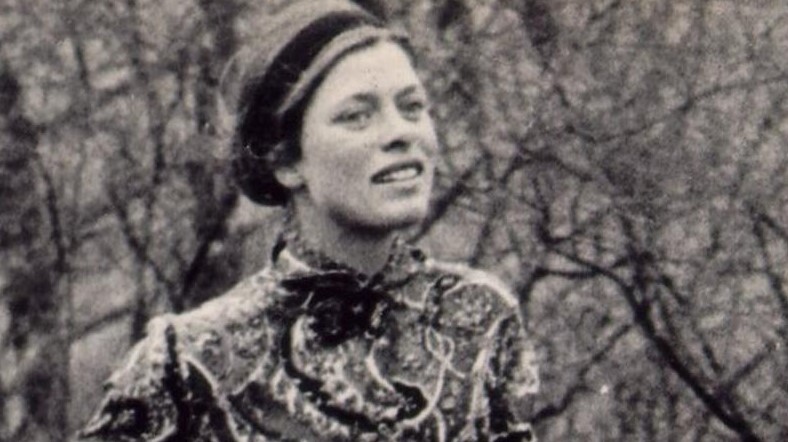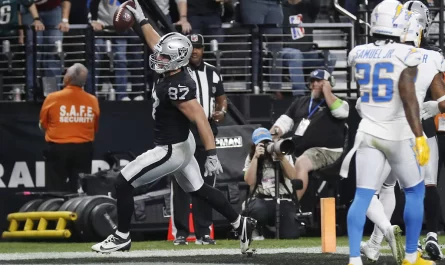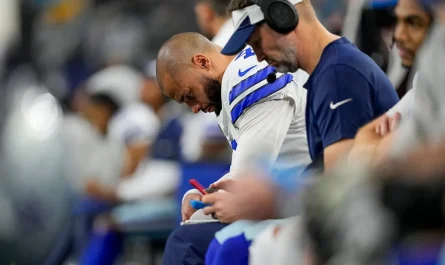Physiologically speaking, women simply cannot complete a marathon.
Like a slap in the face, those nine words jumped off the page at me. Roberta “Bobbi” Gibb was astounded by such brazenness.
A flat-out refusal, but also a disrespectful sideswipe of her skills as a woman, especially given that she was already running up to 40 miles at a stretch, was what she found in the letter she had in answer to her request for an official entry to run the 1966 Boston Marathon.
The 1960s were in full swing, but people’s views on women in sports and long-distance running were dated. Although the topic of whether or not women could run 26.2 miles had long since been settled, they were still excluded from the vast majority of marathons around the globe.
She thought, “To hell with them,” as she dropped the letter on the floor in a crumpled heap. No matter what, Bobbi Gibb would run the Boston Marathon.
Thin grey line for presentations
You’ll see the name Kathrine Switzer and a photo of what looks like guys chasing and manhandling a lady with the number 261 pinned to her belly if you do a Google search for “first woman to run the Boston Marathon.”
It’s a striking picture that lends itself to a story of ingrained misogyny, but that’s not how the first woman finished the longest continuously staged marathon in the world. As is so often the case, there is no simple truth.
Gibb was an active, curious, and outdoorsy kid who grew up in the Boston suburbs.
Gibb’s mom often warned her against spending too much time outdoors with the neighborhood dogs because “you’re never going to find a husband while doing that.”
Despite the decade’s revolutionary advances, the 1960s were marked by inflexible social norms.
There were centuries of well-established notions about women, and after the war, people were just pleased to return to normalcy, which for many meant the little woman in the kitchen, washing the dishes, with the lovely curtains.
I considered my mother’s and her friends’ lifestyles and realized how limited they were: “You couldn’t even get a credit card without the permission of your husband.”
As with many people who grow up with utopian hopes of big change, Gibb knew she wanted something different, but the path to there was complicated.
From an early age, I was motivated to shift cultural perceptions of women, but I lacked the tools to do it.
Gibb’s father took her to the race in 1964, despite the fact that she has lived close to the course all her life. The result was dramatic and noticeable right away.
“I just fell in love with it – I found it very moving. All these people moved with such strength, courage, endurance, and integrity. Something deep inside told me that I was going to run this race – this was what I was supposed to do.”
Midway through the 1960s, long-distance women’s runners were still labeled as rebellious. Many female runners had already finished the marathon’s 26.2 miles, but the misconception persisted that a woman’s body was not designed for such strenuous activity. It was thought that if women were allowed to compete at long distances, it could lead to extreme sexism.
“Running was considered a breeding ground for impropriety that would overly sexualize women,” said Jaime Schultz, Professor of Kinesiology at Penn State.
Almost forgotten are the names of those who should be immortalized as the marathon’s forefathers. A 30-year-old mother from Piraeus named Stamata Revithi ran the same distance unofficially as the men’s marathon the day after the first modern Olympic Games in Athens in 1896. She finished in 5.5 hours.
Little is known about Revithi beyond the fact that she was poor, the mother of a 17-month-old, and the widow of a kid who had died the year before. The Athens Messenger only mentioned briefly that “an active and determined woman made a trial run of the classic route in early March, without any stops except for a momentary rest to eat some oranges,” therefore her accomplishment was mostly overlooked.
After that day, she became renowned as the “first female marathon runner,” although little else is known about her. Athanasios Tarasoulas, a Greek writer, explains it this way: “Stamata Revithi was lost in the dust of history.”
In 1926, an Englishwoman named Violet Piercy finished the London Marathon course illegally in a time of 3 hours, 40 minutes, and 22 seconds. She later ran two recognized marathons, in 1933 and 1936. After finishing the 1936 marathon, she told the Sunday Mirror that she wanted to “prove that women could stick the distance.”
Anyone with half an eye open could see that women could run 26.2 miles, but skepticism persisted on the basis of false assumptions and downright lies.
On August 2, 1928, three of the nine women who competed in the 800 meter final set a new world mark, with Germany’s Lina Radke taking home the gold. Women had been allowed to compete in track and field sports at the 1928 Summer Olympics for the first time.
Incorrectly reporting that several women had collapsed with weariness after the race, and that such achievements were well beyond the female sex, newspapers around the world engaged in a remarkable hostile media campaign that undermined what could have been a huge step forward for women’s athletics.
The Montreal Star yelled that the race was “obviously beyond women’s powers of endurance and can only be injurious to them,” while the New York Times incorrectly reported that “six out of the nine runners were completely exhausted and fell headlong on the ground.” Even the Daily Mail wondered if ladies who ran longer than 200 meters would age faster than average.
As a result of the media uproar, the 800 meters for women were removed from the Olympics. They would not return until 1960. Some ridiculous medical notions crept into the public’s mind and contributed to the stereotype of women as weak.
“There were fears that women would become more’masculine’ if they played sports and that they had a finite amount of energy. If they expended it on education, politics, and sport, it would draw away from their reproductive capabilities,” said Schultz.
In 1964, Gibb began secretly preparing for the Boston Marathon by running through the Middlesex Fells Reservation, which was conveniently located close to both her house and her place of employment.
According to Gibb, “I didn’t know what to do. I didn’t have a coach, no books, nothing. I didn’t have any way of measuring distance, so I just went by time.”
Her parents took a trip to the United Kingdom in 1964, leaving Gibb, then 21 years old, with their Volkswagen campervan. She had a whole summer ahead of her, so she packed up the van and drove leisurely across the country from the east to the west coast to fulfill a lifelong goal.
Over the Berkshires, along the Mississippi River and across the Great Plains, over the Rocky Mountains and the Continental Divide, and down into California — before jumping into the Pacific Ocean — all in one summer: that was Gibb’s training for the 1966 Boston Marathon.
A couple of months before the marathon, she tried to get a runner’s number so that she could be one of the 540 to start the race, but she was turned down with the now-famously terse assessment of women’s physiological capabilities.
one, Gibb believes, was her “chance to change the social consciousness about women,” because if she could disprove one false idea about women, it would call into question all the other false beliefs that had been used to deny women chances.
She took the first of several Greyhound buses four days before the race and arrived at the family home three days later.
On the morning of the race that would rocket her to fame, her mother drove her to the starting line.
Wearing his brother’s Bermuda shorts, a swimsuit, and a large sweater with a hood pulled over his head, Gibb’s father thought he was crazy and refused to let him attend.
She ran a few kilometers as a warm-up and then headed back to the starting point, where she attempted to conceal herself by slinking into some nearby shrubs.
Gibb waited for the faster runners to pass along the road before he joined the moving crowd after the starting pistol sounded.
The males trailing after me “very quickly” realized that Gibb was a woman “probably by studying my anatomy from the rear,” she recalls. “I was so scared; I had no idea what was going to happen; I even considered being arrested.”
No need for her to be concerned. Instead of animosity, friendship blossomed. She told the men around her that she was afraid of getting kicked out of the race when it became apparent that she needed to take off her sweatshirt or suffer the heat in it. They all agreed, “We won’t let them.”
“There was this myth that men were always against women, but it wasn’t true. Those guys were great, upbeat, friendly, and protective; they were like my brothers,” says Gibb.
Gibb was so encouraged by their company that she shed her outer covering and ran around, head held high and blonde hair swaying. People of all ages lined the roadway to cheer her on, and her presence was announced to the other runners via radio broadcasts.
Pandemonium broke out as she neared Wellesley College, a women’s university on the route. Diana Chapman Walsh, president of Wellesley College, was a student spectator that day and later recalled the historic event.
“Word spread to all of us lining the route that a woman was running the course,” she remarked.
We looked at each person in the room with bated breath until, suddenly, a ripple of recognition went through the lines just in front of her, and we cheered as we never had before.
To paraphrase, “We let out a roar that day, sensing that this woman had done more than just break the gender barrier in a famous race.”
The women were sobbing and yelling. ‘Ave Maria! Ave Maria!’ was repeated over and over by one. “It was a very touching moment for me,” Gibb adds.
After covering the first 20 miles in under three hours, Gibb slowed down because the soles of the men’s running shoes she had just purchased were cutting into her feet.
Her race had shifted from one of fear of being taken out by authorities to one of the aching desire and hunger for the finish line that any long-distance runner knows all too well.
Gibb had no idea how close she was to the conclusion as she made her way into Boston, encouraged by the loud roar that accompanied her.
In the end, Gibb says, “I just gritted my teeth and ran” because he had no idea where he was or how far he had to go.
As she rounded the corner onto Hereford Street, the din appeared to increase, but a last left onto Boylston Street led her to the promised land.
Gibb finished the Boston Marathon for the first time in an astounding 3 hours, 21 minutes, and 40 seconds, beating out over two-thirds of the field.
To catch a sight of the first woman to cross the finish line of the legendary race, onlookers on both sides of the road strained their necks, oblivious to the other runners who were going by.
Massachusetts Governor John Volpe greeted her at the finish line, shaking her hand and offering his congratulations. She was then escorted into a hotel room, where the eyes and ears of the world’s press were riveted.
Gibb was invited to join the group of men she had been running with for the traditional post-race stew after the interviews, but she was turned away at the door and told, “Sorry, men only.”
A lot of things had changed that day, but true equality was still a long way off.
Two more times, Gibb competed in and won the Boston Marathon. In 1967, she was joined by Switzer, the runner commonly represented as the first woman to run the marathon, whom she defeated by over an hour.
While the iconic photo of Switzer running the Boston Marathon in 1967 became a symbol of women’s fight for equality in sports, its origins and subsequent use have been the subject of much debate and controversy, particularly among Gibb, the real first woman to complete the marathon.
It gives the impression that a bunch of men are harassing Switzer as she runs, but in reality, just one man, race co-director Jock Semple, was trying to remove her race number.
As Gibb puts it, “she had gained her number illegally by obscuring her gender on the application and having her male coach pick it up.” Gibb ran without a number or official entry once again.
For her part, Switzer has always maintained that she never posed as anything other than a woman and that it was her custom to use her initials rather than her given name on submission forms.
She also explains that her male coach picked up her race number because she was chosen to be the team captain.
Gibb claims that she sympathized with Semple because he was driven by a desire to protect the prestige of his race rather than by antiquated rules.
As the article states, “Jock was simply worried that the race could lose its accreditation with the Amateur Athletic Union by having women run in a men’s division race.”
Even though Gibb was welcomed back with open arms, it was the image of Switzer that made headlines and stoked resentment and debate.
In 1967, I publicly waited at the starting line. There were no attempts to expel me, and everything went smoothly. According to Gibb, “all the men were great, even Jock Semple.”
Unlike Gibb’s story, Switzer’s suited the narrative of antagonism and confrontation that was popular in the 1960s.
For decades afterwards, that picture was mistakenly interwoven with the legend of the first female finisher of the Boston Marathon.
But Gibb’s position is crystal obvious.
Swisser was not the pioneer or the authority. She finished second in the women’s pioneer category of the Boston Marathon in its second year, according to Gibb.
It wasn’t until 1972 that women were officially given entry numbers, but the spark was already there thanks to the pioneers.
For better or worse, “it changed how people thought about women running,” as Gibb puts it.
While the first women-only marathon was run in 1973 in Waldniel, West Germany, athletes’ and fans’ patience began to wear thin as the 1980 Summer Olympics in Moscow rolled around without a female marathon event.
Especially considering that a statement issued by the American College of Sports Medicine (ACSM) in January 1980 seemed to definitively settle the issue of medical evidence against women running large distances.
Long-distance running is not always harmful for a fit and healthy female athlete, the statement said.
The American College of Sports Medicine has made the following recommendation: “The ACSM recommends that women be allowed to compete at the national and international level in the same distances as their male counterparts.”
After a vote at the 1983 International Olympic Committee meeting in Baden-Baden, Germany, a women’s marathon was officially added to the Olympic program at the 1984 Games in Los Angeles.
The impact on women’s marathon running has been severe, with the world mark falling by an incredible 123 minutes in the last 60 years compared to a decline of 54 minutes in the men’s record over the past 115 years.
Gibb helped change the way people viewed women runners, but that was just one chapter of a richly diverse life that she continued to live by running every day.
After that, says Gibb, “I wanted to challenge everything in order to keep the ball rolling.”
She completed her undergraduate degree in 1969 with a philosophy major and a mathematics minor, setting her up well for medical school.
It was difficult for women to get into medical school, and she was informed during an interview that she was “too pretty” and “would distract the boys in the lab”—similar to the experience of women in Boston.
In its place, she pursued evening law classes at the Massachusetts Institute of Technology while working in epistemology and neuroscience during the day.
She passed the bar exam in 1978 after founding the non-profit Institute for the Study of Natural Systems in 1976.
She spent 18 years as an attorney before returning to her scientific roots to study neurodegenerative illnesses at the molecular level of cell biology.
She has published many books, including her autobiography Wind in the Fire, and is also a fine art sculptor and modern painter.
Gibb was honored as a three-time champion of the Boston Marathon and had her name engraved on the Boston Marathon Memorial in Copley Square in 1996, continuing to serve as an inspiration to runners everywhere.
Ethiopia’s Atsede Bayisa learned of the events of 1966 in 2016 and presented Gibb with her Boston Marathon winner’s trophy.
“Every year, they celebrate me as a three-time winner, which is fun, but the main thing is I get to meet all these amazing people from all over the world, all social groups, all ethnic groups, races, genders — we love each other — we make friends,” says Gibb.
Bobbi Gibb has accomplished many things, including running, science, law, the arts, and writing, and she does it all while spreading a positive message about equality.
Gibb explains that one of his goals was to put an end to the “stupid war between the sexes,” in which males were relegated to one set of constraints while women were given another.
I’m constantly battling misleading information. The truth is a liberating force. Men weren’t allowed to feel and women weren’t permitted to think for themselves back then. A man may wish to knit, but what then? Is he less of a man because of this? No. Is it possible for a woman to become a truck driver? Can we say that she is not a woman? No.
It’s been said that “anyone can be anybody.”




